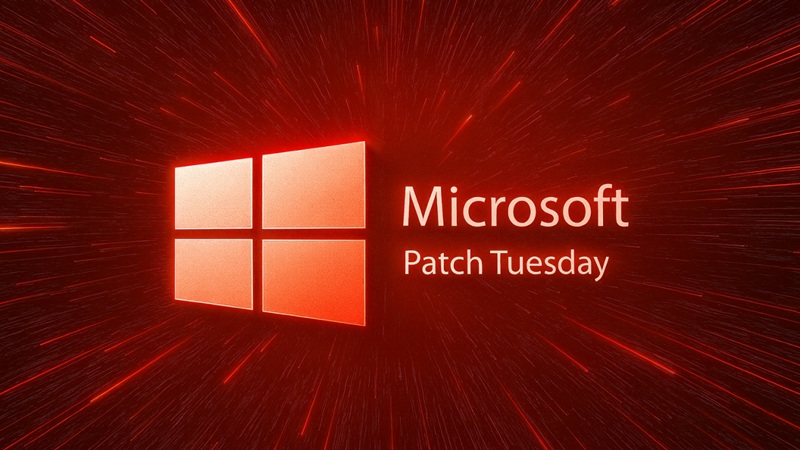Urgent Security Alert: Microsoft’s August 2025 Patch Tuesday Addresses 100+ Vulnerabilities, Including a Critical Zero-Day
13th August 2025, Kathmandu
Microsoft has released its August 2025 Patch Tuesday updates, and the cybersecurity community is urging immediate action.
This crucial release addresses over 100 security vulnerabilities across various Microsoft products, including a critical zero-day flaw in Windows Kerberos that could be actively exploited.
Microsoft August 2025 Patch Tuesday
Users and organizations worldwide, especially in places like Kathmandu, Bagmati Province, Nepal, must prioritize these updates to safeguard their systems.
The Alarming Numbers: A Deep Dive into This Month’s Patches
This August 2025 Patch Tuesday stands out due to the sheer volume and severity of the vulnerabilities patched. Here’s a breakdown of the immediate threats:
Total Vulnerabilities Addressed: Over 100
“Critical” Vulnerabilities: 13 – these are the most severe, often allowing attackers to gain full control of a system without user interaction.
9 Remote Code Execution (RCE) vulnerabilities
3 Information Disclosure vulnerabilities
1 Elevation of Privilege vulnerability
Breakdown by Type:
4 Denial of Service (DoS)
9 Spoofing
18 Information Disclosure
35 Remote Code Execution (RCE)
44 Elevation of Privilege (EoP)
The Critical Zero-Day: Windows Kerberos Under Attack
The most concerning revelation is the public disclosure of a zero-day vulnerability: CVE-2025-53779 – Windows Kerberos Elevation of Privilege.
This flaw, discovered by Akamai’s Yuval Gordon, leverages “relative path traversal in Windows Kerberos” and could allow an authenticated attacker to gain domain administrator privileges. This means an attacker with initial access could completely compromise an entire domain, leading to widespread data breaches and system disruption.
Exploitation Requirements: To exploit this vulnerability, attackers need:
Elevated access to MSDS-groupMSAMembership (to use the dMSA).
Write access to msds-ManagedAccountPrecededByLink (to specify a user the dMSA can act on behalf of).
Organizations utilizing Windows Server 2025 are particularly at risk and should pay close attention to Akamai’s detailed report for further technical insights.
Other Critical Vulnerabilities to Prioritize
Beyond the Kerberos zero-day, several other critical vulnerabilities demand immediate patching:
CVE-2025-53793 Azure Stack Hub Information Disclosure Vulnerability: Unauthorized information disclosure over a network due to improper authentication.
CVE-2025-49707 Azure Virtual Machines Spoofing Vulnerability: Authorized attackers can perform local spoofing due to improper access control.
CVE-2025-53781 Azure Virtual Machines Information Disclosure Vulnerability: Sensitive information exposure over a network by authorized attackers.
CVE-2025-50176 DirectX Graphics Kernel Remote Code Execution Vulnerability: Local code execution due to type confusion.
CVE-2025-50165 Windows Graphics Component Remote Code Execution Vulnerability: Remote code execution without authentication via untrusted pointer dereference.
CVE-2025-53740 & CVE-2025-53731 Microsoft Office Remote Code Execution Vulnerability: Local code execution through use-after-free flaws in Microsoft Office.
CVE-2025-53784 & CVE-2025-53733 Microsoft Word Remote Code Execution Vulnerability: Local code execution via use-after-free and incorrect numeric type conversion in Microsoft Word.
CVE-2025-48807 Windows Hyper-V Remote Code Execution Vulnerability: Local code execution by authorized attackers due to improper communication channel restriction.
CVE-2025-53766 GDI+ Remote Code Execution Vulnerability: Remote code execution via heap-based buffer overflow in Windows GDI+.
CVE-2025-50177 Microsoft Message Queuing (MSMQ) Remote Code Execution Vulnerability: Remote code execution via use-after-free in Windows Message Queuing.
CVE-2025-53778 Windows NTLM Elevation of Privilege Vulnerability: Network-based privilege elevation by authorized attackers due to improper authentication.
The Urgency of Patching
The sheer number of vulnerabilities, particularly the critical RCE and EoP flaws, underscores the importance of prompt patching. Exploitation of these vulnerabilities could lead to:
Data Breaches: Sensitive information theft.
System Takeovers: Attackers gaining full control of affected systems.
Ransomware Attacks: Encryption of data and demanding payment.
Network Disruption: Denial of service, impacting business operations.
Actionable Recommendations for Users and Administrators
To mitigate these risks effectively, follow these best practices:
Prioritize and Apply Updates Immediately: Focus on all “Critical” rated patches, especially those impacting widely used components like Windows Kerberos, Office, and Graphics components.
Backup Your Systems: Always ensure you have recent backups before applying any major updates.
Monitor Your Network: Keep an eye on network activity for any unusual behavior after patching.
Review Akamai’s Report: For detailed technical insights into the Kerberos zero-day, review Yuval Gordon’s report.
Stay Informed: Keep abreast of further security advisories from Microsoft and trusted cybersecurity sources.
Important Reminder: Windows 10 End of Support Approaching!
As a critical side note, remember that support for Windows 10 will officially end on October 14, 2025. After this date, Microsoft will cease providing free software updates from Windows Update, technical assistance, or crucial security fixes for Windows 10. While your PC will still function, continued use will expose it to significant security risks from unpatched vulnerabilities.
Recommendation: It is highly recommended to migrate to Windows 11 before October 14, 2025, to ensure your systems receive ongoing security updates and technical support, protecting you from emerging threats.
Conclusion
Microsoft’s August 2025 Patch Tuesday is a stark reminder of the persistent and evolving threat landscape. The inclusion of a publicly disclosed zero-day vulnerability in Windows Kerberos highlights the need for immediate and proactive security measures. By promptly applying these crucial updates, users and administrators can significantly enhance their system security and protect against potential exploitation. Don’t delay—secure your systems today!
For more: Microsoft August 2025 Patch Tuesday








